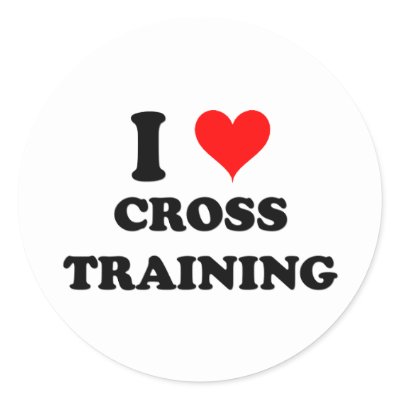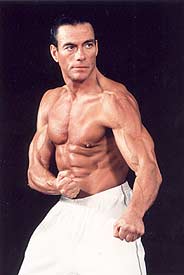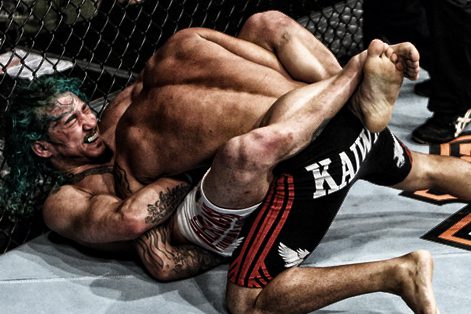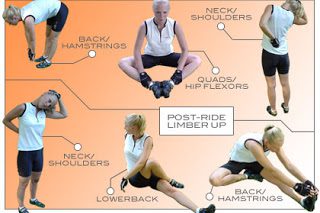Aiiight, so people keep asking me about this “cross-training” thingy.
“What is it, do I need it, why do I need it and how should I do it?” are just a few of the obstacles encountered when faced with the daunting dilemma of cross-training.
So let me break it down for you.
Step by step.
First of all, what is cross training?
Generally speaking, the term cross-training refers to somebody (whether a professional athlete or regular hobbyist) training in sports or activities other than the one that you normally compete/practise in – with the goal of improving performance. Cross-training simply takes advantage of the particular effectiveness of each training method, while at the same time attempting to neglect the shortcomings of those method by combining them with other methods (that address their weaknesses), giving you a super bad-ass workout scheme.
And the cool part is, this has been done in Karate forever.
Some quick examples:
- Miyagi Chojun, founder of Goju-ryu Karate was reportedly quite proficient at judo, which he enthusiastically studied while serving in the army. Not to mention kung-fu (quanfa) learnt during his numerous travels to China, where he found many techniques that he incorporated into what would later be known as his own system of Karate. And let’s not forget his superb hojo-undo/Karate strength training methods, now practised all over the world.
- Mabuni Kenwa, founder of Shito-ryu Karate, was pretty skilled in ju-jutsu, mainly due to his powerful connections on the Japanese mainland, including such masters of ju-jutsu and ninjutsu as Konishi Yasuhiro and Seiko Fujita. He also knew a lot of kobudo, with kata like Sueyoshi no Kon and Hamahiga no Sai being among his finest.
- Funakoshi Gichin, founder of Shotokan-ryu Karate, was often seen training with weapons like bo and sai, due to his extensive cross-training and exchange of techniques in Okinawan kobudo with grandmaster Taira Shinken. And let’s not forget his extensive body hardening regimen, using tools like the makiwara (as seen in his numerous books).
- Otsuka Hironori, founder of Wado-ryu Karate, was a headmaster and licensed teacher of traditional Japanese ju-jutsu (Yoshin Shindo Ryu) among other stuff, before incorporating Karate into his martial arts system.
- Azato Anko, legendary Shuri-te Karate teacher of Funakoshi Gichin, was one of the most skilled swordsmen in the Ryukyu Kingdom, due to his extensive practise in Jigen-ryu kenjutsu (samurai-style fencing with various weapons) of which he even became a licensed master.
- Nagamine Shoshin, founder of Matsubayashi Shorin-ryu Karate was seriously enlightened when it came to Zen, as he was an avid practitioner of zazen (seated meditation) which he famously incorporated into his style of Karate.
- And the list goes on…
As you can see, most – perhaps all – of our famous Karate pioneers/founders/grandmasters somehow fused their Karate together with either other martial arts (ju-jutsu, judo, kenjutsu etc.) or non-martial arts (strength training, meditation etc.) as well as the fine arts (many masters excelled in calligraphy, literature and/or music, although the public rarely knew about the width of their skills in this particular area) to step their game up.
And the coolest thing is, the further back in history you go, the more you start to realize that Karate in itself (before if became “Karate”) is actually an eclectic mix of several fighting traditions and cultural arts cooked together in the pot of Okinawa, as it was an important place for trade and travel in the old world.
Thus, Karate – in it’s original shape and form – was nothing but a bunch of Okinawan dudes having fun, cross-training.
That’s right.
(But you already knew this, didn’tcha?)
So why shouldn’t you?
Yeah, why shouldn’t YOU cross-train?
Well, that’s the second point. Now that we know what cross-training is, and that many (if not most) of our “founding fathers” (you can Google basically any famous Karate master, and you’ll quickly see that Karate was but one of their pursuits) considered it vital – how do you know if you should cross-train?
To answer that, you will need to have a look at your particular branch of Karate, and determine what its weak points and its strong points are.
(Sidenote: The problem here, of course, is that if you are a beginner in your style it will be pretty much impossible to determine the pro’s and con’s of the whole system, since you’ve only nibbled on a small piece of the whole pie, so to speak. So before we go any further with this cross-training thingy, I advice you to get acquainted with one style only, and then make other choices when you’re proficient and confident enough in your martial arts skills/abilities of your “mother style”. Also, a strict Japanese sensei would mercilessly feed you to his hungry black belts if he found you “dojo hopping”, so keep it on the down-low, mmkay?)
Again, when looking at your own style, you will need to find points of potential improvement. These are determined by the pro’s and con’s of your dojo/style’s characteristics.
A quick example:
What?: Sports Karate School
Pro’s: Great basic physical training, cardio, explosiveness, strength, agility, stretching.
Con’s: Lacks in realistic self-defense training, traditional/non-competitive values and close-range fighting as well as groundwork.
Conclusion?
Well, that’s the next point.
After figuring our what needs to be improved, the rest depends entirely on how far you are willing to take it.
Are you satisfied with not practising the most ultimate, all-encompassing style in the universe? Or do you want something more? Something else?
See, depending on your goals with Karate you might need one type of cross-training or another type of cross-training. Or maybe no cross-training at all! Using the above Sport Karate dojo example – if your goal actually is to become a great Karate athlete, the only cross-training you need is more of the “pro’s”: strength, agility, technique, mental training etc. Forget the traditional stuff then. Throw some other sports in the mix too (to not stress yourself out).
Hey, there’s a reason why the Japanese female kata team practises tons of badminton on their spare time!
(Oh, was that a secret? Oops…)
Or perhaps your goal is to get that next belt? To pass an important grading? But, in order to get that belt you need to have better cardio, because you know there is a 15 minute full contact kumite fight-to-the-death waiting? Well, then you’d better strap on some jogging shoes and do countless hours of roadwork, amigo!
Right?
Wrong.

Because jogging fifteen hours a week will not do any difference to your level of fatigue in that intense grading fight. You’d be better off switching those wasted hours of slow jogging to four minutes of tabata-style exercises three times a week. Most definitely.
Which, conveniently enough, brings us to the third point:
Choosing the appropriate means of cross-training.
Listen, the goal of cross-training must always be to improve your Karate, by addressing the weak points that you’ve identified in your game. Whether that improvement then is technical, psychological or purely physical is another question, but this fact remains:
Your cross-training activity should be a side dish, not main course.
Therefore, you will have to follow two basic guidelines:
1. Keep it simple: If you do something advanced without proper instructions (plyometric training, high altitude running, underwater exercises, HIIT [high-intensity interval training] etc.) you risk not only developing bad habits that might spill over to your Karate, but more importantly you risk injuries. Always start slowly and gradually increase the level. Keep it simple, keep it fun.
2. Keep it relevant: If you feel your Karate techniques are bad because of your weak back/leg muscles (and conclude that you need some extra weight lifting as cross-training), don’t go to the gym and mindlessly bust out 50 reps on every machine in sight. Instead, focus on the few full-body exercises that give most bang for the buck. Dead lift, bench press, chin-up and squat is enough for anybody. Full body exercises that work everything you need, without removing those important, yet often overlooked, stabilizing muscles (like a machine would do by isolating the working muscles) are preferred. Always make sure that your cross-training is as close to your Karate in terms of range of movements, intensity, volume, duration etc. as possible. Make sure you never waste your time by messing around with stuff that has no carryover to your Karate skills. Don’t be foolish. Keep it relevant.
Which then brings us to the last point in question:
Your situation.
I mean, what possibilities do you have? If you want to become better at breakfalls, and therefore decide to take up judo class once a week – there’d better be a judo club nearby. And you’d better have extra time. Otherwise it won’t last long.
Or perhaps you want to have more dynamic kicks, so you simply order a taekwondo DVD that teaches you a boatload of kicks? Well, you’d better have a spacious living room, some free time and a dose of motivation – because there is no sensei to scream at you now.
At the end of the day, if your possibilities of cross-training are not that convenient (considering time, location and motivation), then your previous steps of 1) first identifying your weak spots and 2) subsequently finding the perfect cross-training activity to improve those weaknesses were a bit wasted.
It all comes down to you.
But that’s basically all there is to it.
So, with that being said, is cross-training something for you? I don’t know. All I can say is that in my dojo we try to incorporate strength training, cardio, kumite, kata, kihon, bunkai, pad drills, conditioning and plain ol’ self-defense in just about every regular class – so that people don’t need any extra cross-training on their precious spare time.
Sounds unconventional?
That’s because we are.
And if your dojo isn’t, give cross-training a serious thought.
It might very well be the missing piece of your puzzle…



20 Comments